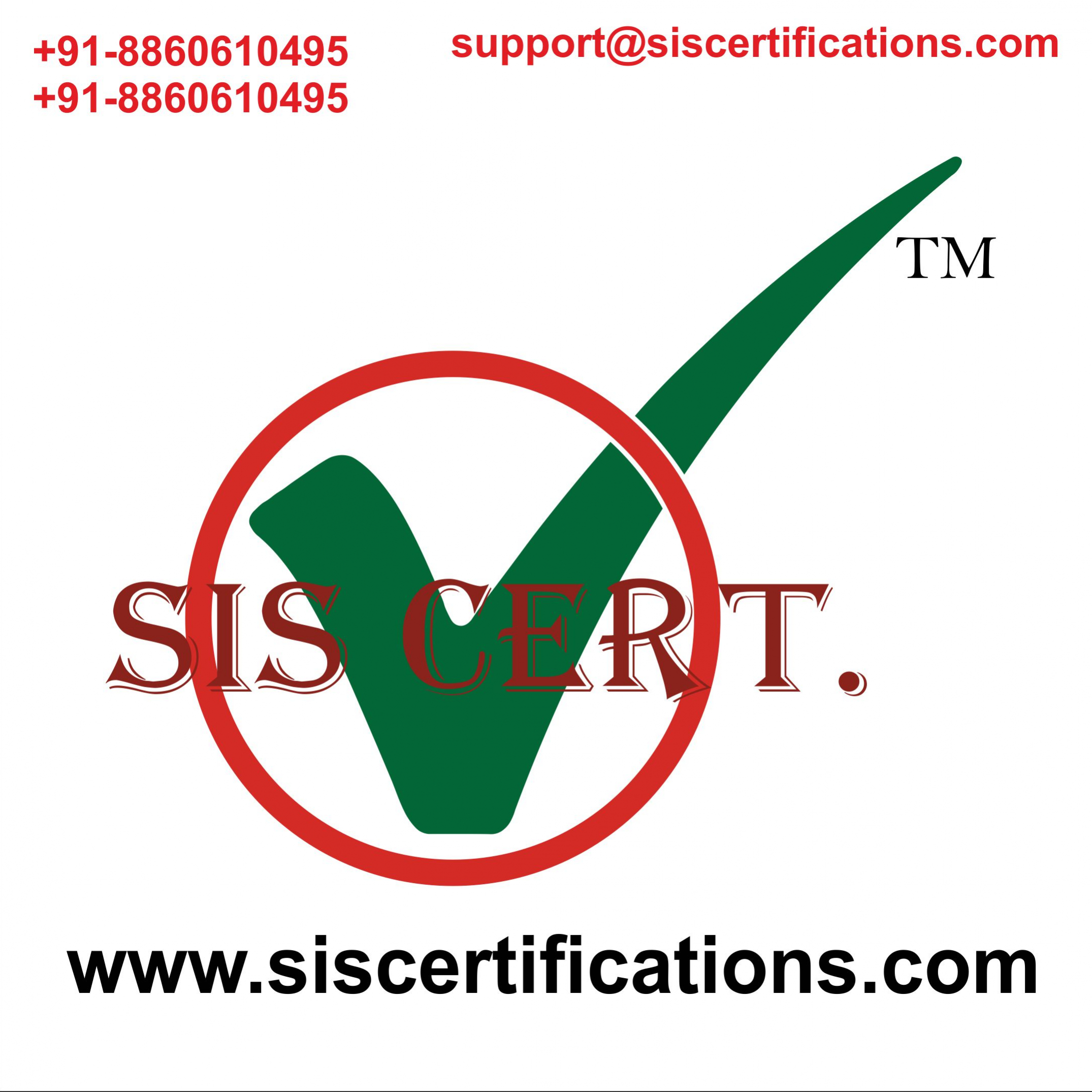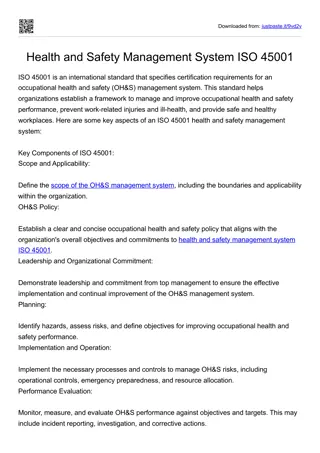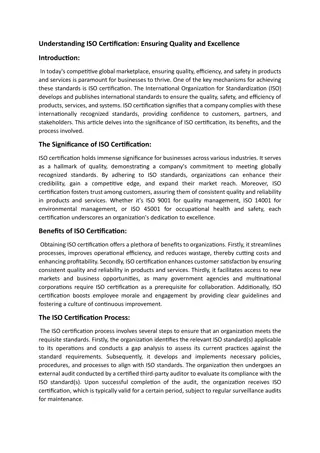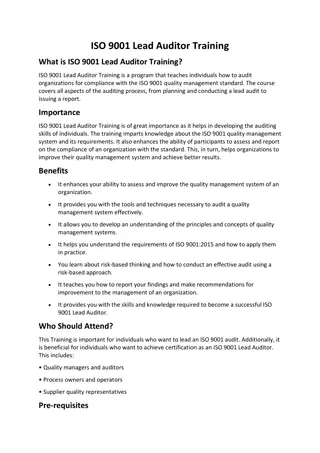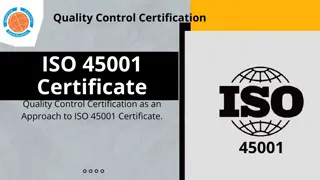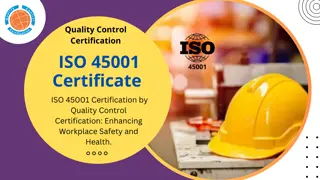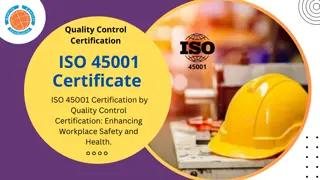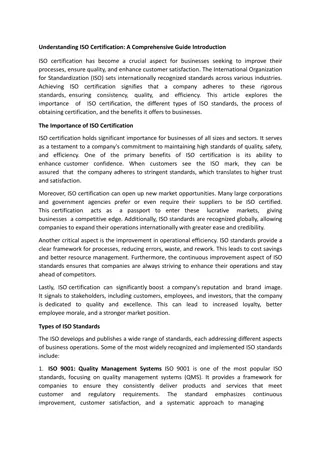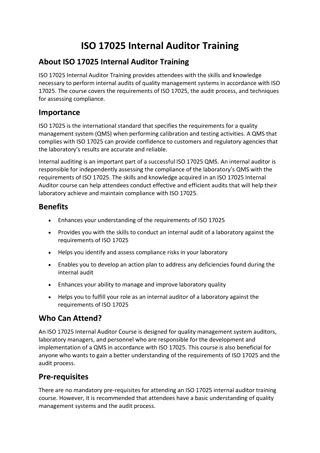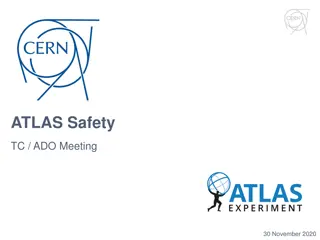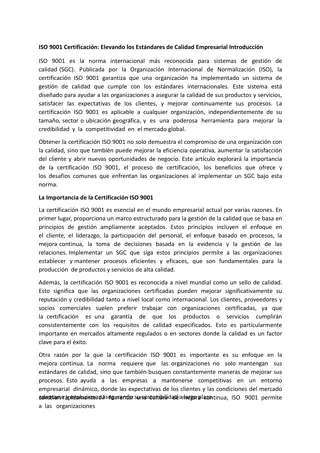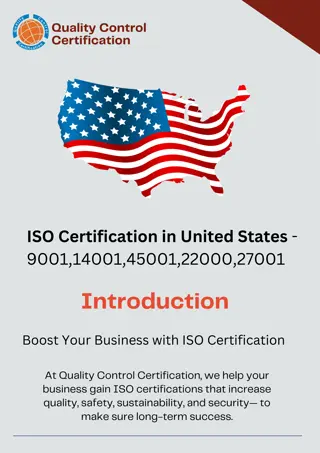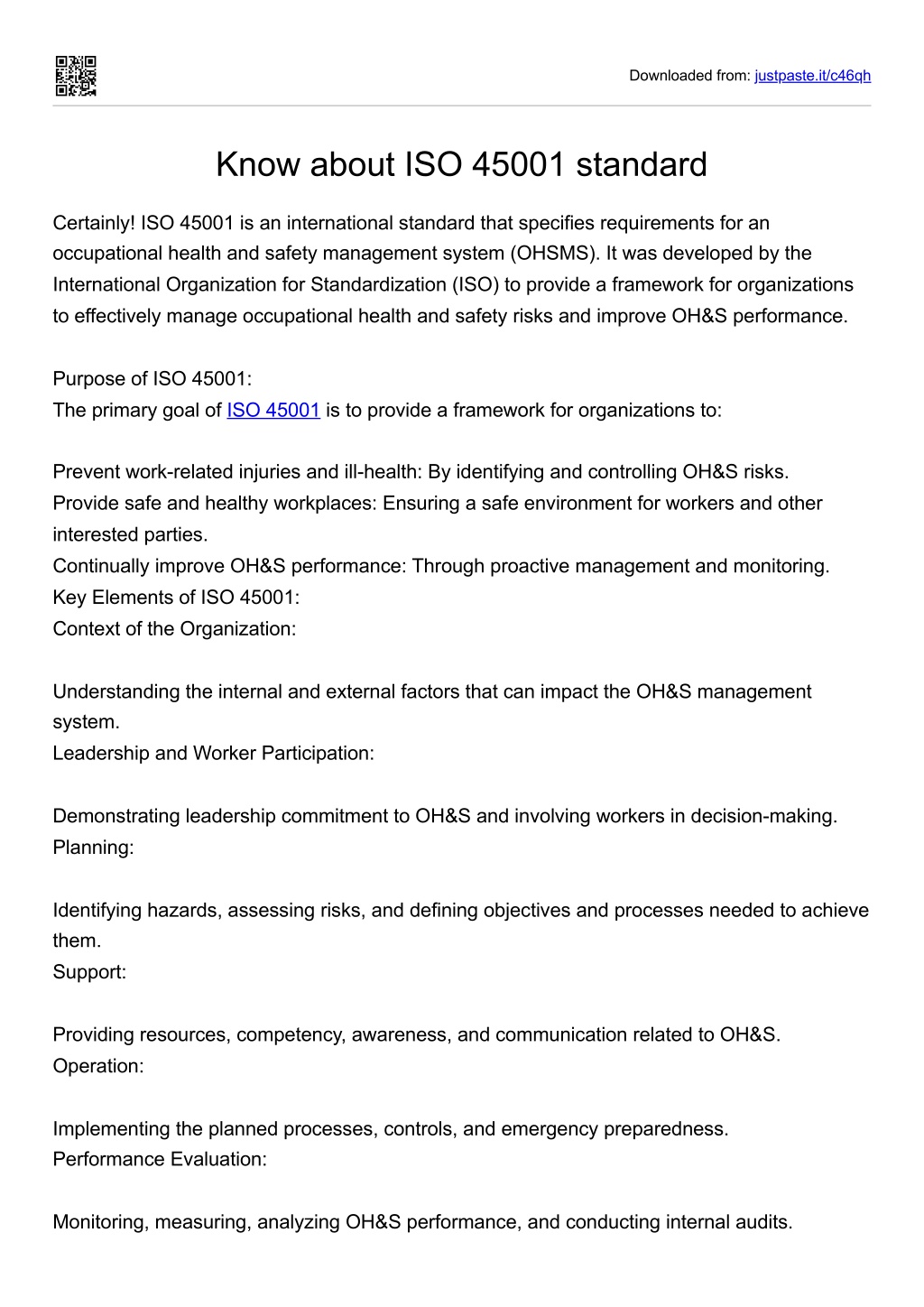
Know about ISO 45001 standard
ISO 45001 is an international standard that specifies requirements for an occupational health and safety management system (OHSMS). n
Download Presentation

Please find below an Image/Link to download the presentation.
The content on the website is provided AS IS for your information and personal use only. It may not be sold, licensed, or shared on other websites without obtaining consent from the author. Download presentation by click this link. If you encounter any issues during the download, it is possible that the publisher has removed the file from their server.
E N D
Presentation Transcript
Downloaded from: justpaste.it/c46qh Know about ISO 45001 standard Certainly! ISO 45001 is an international standard that specifies requirements for an occupational health and safety management system (OHSMS). It was developed by the International Organization for Standardization (ISO) to provide a framework for organizations to effectively manage occupational health and safety risks and improve OH&S performance. Purpose of ISO 45001: The primary goal of ISO 45001 is to provide a framework for organizations to: Prevent work-related injuries and ill-health: By identifying and controlling OH&S risks. Provide safe and healthy workplaces: Ensuring a safe environment for workers and other interested parties. Continually improve OH&S performance: Through proactive management and monitoring. Key Elements of ISO 45001: Context of the Organization: Understanding the internal and external factors that can impact the OH&S management system. Leadership and Worker Participation: Demonstrating leadership commitment to OH&S and involving workers in decision-making. Planning: Identifying hazards, assessing risks, and defining objectives and processes needed to achieve them. Support: Providing resources, competency, awareness, and communication related to OH&S. Operation: Implementing the planned processes, controls, and emergency preparedness. Performance Evaluation: Monitoring, measuring, analyzing OH&S performance, and conducting internal audits.
Improvement: Taking corrective actions, learning from incidents, and continually improving the OH&S management system. Benefits of Implementing ISO 45001: Reduced Workplace Incidents: Improved hazard identification and risk management lead to fewer accidents and injuries. Legal Compliance: Helps organizations comply with relevant OH&S regulations and requirements. Enhanced Reputation: Demonstrates commitment to worker safety and health, enhancing reputation and credibility. Cost Savings: Fewer accidents mean reduced costs associated with downtime, compensation claims, and insurance premiums. Improved Worker Morale: Workers feel valued and are more engaged when their safety is prioritized. Certification Process: Organizations can seek certification to ISO 45001 by following these steps: Gap Analysis: Assess current OH&S practices against ISO 45001 requirements. Implementation: Develop and implement necessary processes and controls. Internal Audit: Conduct internal audits to verify compliance and effectiveness. Management Review: Review the OH&S management system by top management. Certification Audit: An accredited certification body conducts an audit to assess compliance with ISO 45001. Continual Improvement: Maintain and continually improve the OH&S management system based on feedback and performance evaluation. ISO 45001 emphasizes the importance of worker participation, proactive hazard identification, and continual improvement in occupational health and safety. It provides a systematic
approach for organizations to create safer workplaces and protect the well-being of workers.
